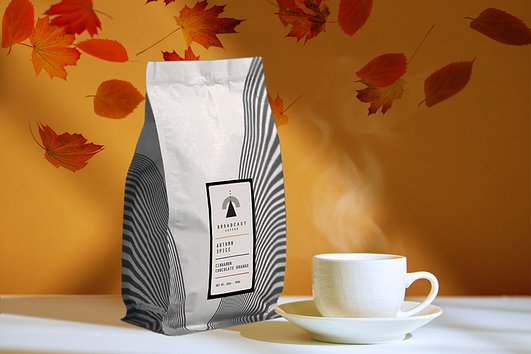The Best Coffee in the World
![]() Maryna Gray
• March 19, 2021
Maryna Gray
• March 19, 2021
Coffee elitists swear by tea-like Ethiopian coffees with complex and fruity notes. Tourists on vacation in Hawaii are convinced Kona produces the world's best coffee. McDonald's' advertising has you thinking 100 percent Colombian is the way to go, and Starbucks insiders say Howard Schultz can't get enough of earthy Sumatran beans.
What's the best coffee in the world? The only way to truly answer this question is to try them all and decide which ones please your palate most; after all, beauty is in the eye of the beholder. Who knows? You might be a Colombian coffee lover in the morning and an Ethiopian coffee aficionado in the afternoon.
The Best Coffee in the World
Many coffee lovers have an idea about how coffees from different parts of the world taste. But even for your average coffee connoisseur, it may still be difficult to tell the difference between two coffees from different regions of the world; for instance, trying to differentiate the taste of a Guatemalan coffee from a Brazilian. We're here to break down a few of these basic taste differences for you.
Brazil
Brazil stands alone since it's such a large coffee producer (the world's largest, in fact) and has a widely varied output. Brazilian coffee is processed in three ways: dry (natural), wet (washed), and semi-washed (pulp natural). During dry processing, coffee is dried while still in the cherry, whereas with the wet process, the coffee is stripped of its outer layers before the drying process. Pulped natural is done by pulping a coffee, but emitting the fermentation stage in order to remove the skin. Chocolate and spice flavors are common and these coffees linger in your mouth in comparison to other South American coffees. Some Brazilian beans have a pronounced nutty quality and a heavy body, which makes them a frequent component in espresso blends.
Kenya
Most Kenyan coffee is processed by wet method to ensure the best quality. The sugary coating that remains on the beans is removed through a fermentation process before the beans are dried. Processing, variety, and the fact that most of the coffee is grown without shade, allows Kenyan coffee to have savory and sweet characteristics that are noticeable in the form of a black currant tartness or tomato-like acidity.
Central America
When we think of Central America, many of us might think of Guatemala and Costa Rica. This region as a whole is one of the largest contributors to the global coffee supply. Central America often produces bright and clean coffees, whereas the flavors produced in Guatemala, Mexico and Nicaragua are somewhat less sweet than those from South America. Other flavors commonly found in these coffees range from fruit to nuts; these fruity flavors often work well with cocoa and spice flavors.
South America
Colombian coffee is often thought of when talking about South American coffees, which makes perfect sense when thinking about how they rank among the top three coffee producing countries in the world. Their coffee also has the most recognizable flavor for most North Americans, which is why the flavor reminds some people of a classic coffee. They tend to stick with wet (washed) processing: this produces a mellow acidity and clean cup. Common flavors found in South African coffee include nuts, chocolate and caramel tones.
Ethiopia
Ethiopian coffees are processed either natural or washed: two different processes that create very different flavor profiles. Washed coffees have a floral, tea-like delicacy to them, while natural coffees tend to be heavy, fruity, and wine-like. Washed coffees can often express lemongrass or jasmine characteristics, and they're much lighter and drier on the palate. A naturally processed Ethiopian coffee has more of a syrupy body, along with a strong sweet berry flavor. Ethiopia is in a category of its own because of its great biodiversity and the many varieties of coffee grown there.
Indonesia
Coffees from Indonesia have dark and deep flavors, with almost an earthiness to them. These coffees often have heavy, musty notes with a long-lasting finish that feels like unsweetened or dark cocoa. One coffee from this region that's familiar to many is Sumatran coffee, which takes a well to dark roasting. Sumatra produces Mandheling and Ankola, which are two of the world’s most famous and high-quality coffees. There are usually smokey or toasted flavors with a lot of complexity present in a cup of Sumatran coffee.
The Best Coffee Drinks in the World
Turkish Coffee
Considered a social ritual, unfiltered coffee is prepared by brewing finely ground beans with spices like cardamom in a cezve (special metal pot).
Mazagran
Often called the “original iced coffee,” mazagran is an Algerian preparation of sweetened espresso over ice, served with lemon and sometimes rum for an extra kick.
Karsk
In Scandinavian countries, two parts vodka or moonshine are mixed with one part coffee to make this intense cocktail, perfect for the freezing Scandinavian winters.
Butter Coffee
Traditionally, Tibetans add yak butter and salt to their tea. Buttered coffee can also be found in East Asia, Sweden, and Ethiopia, and cocktail afficionados know that coffee is an excellent addition to hot buttered rum.
Egg Coffee
Yes, you read that right. In Vietnam, whipped egg yolks and sugar are mixed with coffee to form a creamy treat, which some say tastes like liquid tiramisu. Yum!
Get Your VIP Pass: Try four coffees hand-picked by a world-class judge!
We want to help you make better coffee at home. Our recommendations are our own, and never sponsored. If you see something you love and buy it through our links, we may receive an affiliate commission (thanks for that!).





